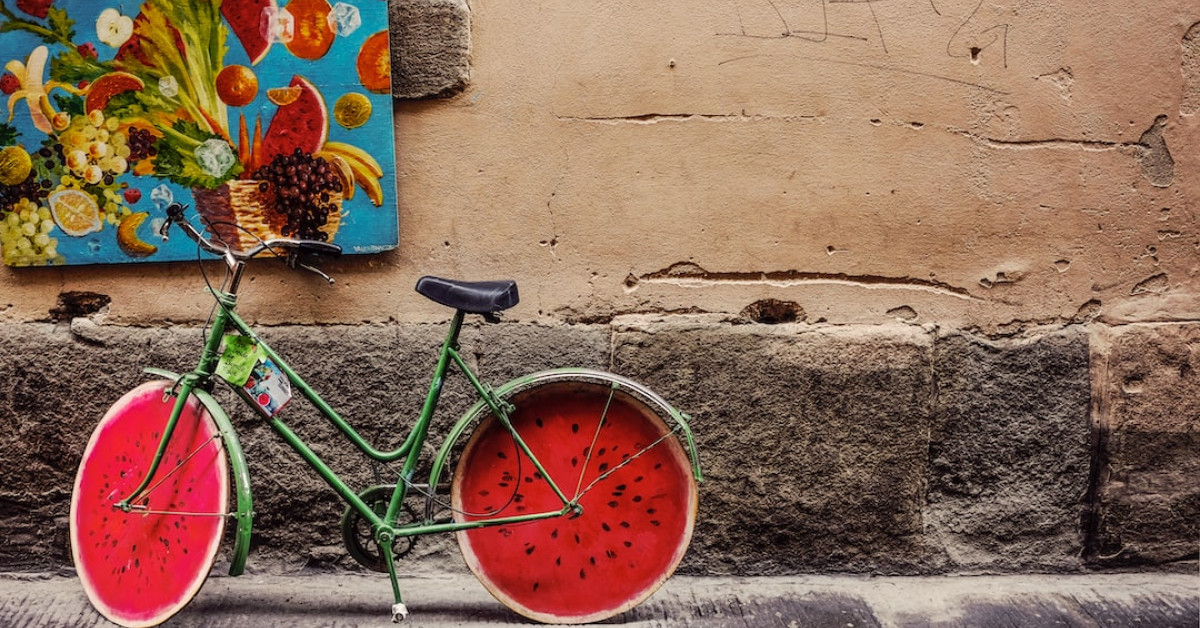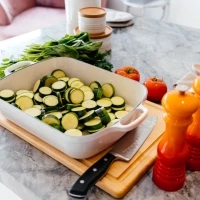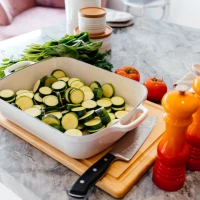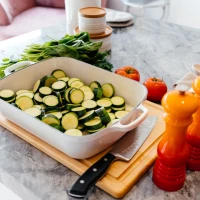Watermelon sticks are not just a simple slice of fruit; they epitomize the joy of summer, the essence of hydration, and the power of presentation. Known for their ease of eating and perfect for an array of occasions, from backyard BBQs to classy cocktail parties, mastering the art of cutting watermelon sticks is a skill that any culinary enthusiast or health-conscious individual should have in their repertoire. But how do you achieve those clean, even, and enticing sticks every time? In this comprehensive guide, we will dive into the nuances of transforming a hefty watermelon into neat, portable sticks that are destined to impress. Whether you’re a seasoned chef or a kitchen newbie, get ready to enrich your culinary toolkit with this fruit-prepping finesse.
Begin with the Basics: Selecting the Perfect Watermelon
Signs of a Ripe Watermelon
Before you can create those perfect sticks, you need the ideal canvas - a ripe, juicy watermelon. To select the best one, keep these tips in mind:
- Look: The watermelon should have a firm, symmetrical shape without any major bruising or dents.
- Lift: It should feel heavy for its size, a sign that it is brimming with water and ripe inside.
- Turn: Inspect the underside; a creamy yellow spot indicates it has sat on the ground and ripened under the sun.
- Tap: Give it a tap; a ripe watermelon will have a deep, hollow sound, unlike the dull thud of an underripe one.
How to Store Your Watermelon
Once you’ve selected the perfect watermelon, ensure its longevity by storing it properly before you start cutting:
- Keep whole watermelons at room temperature to retain its nutrients and flavor before cutting.
- After cutting, store watermelon sticks in the refrigerator in an airtight container. This will help maintain freshness and juiciness for easy snacking anytime.
The Right Tools for Cutting Watermelon Sticks
Proper tools are paramount in creating those perfect watermelon sticks. Although watermelon is not particularly tough to cut, using the wrong knife can make your task difficult and unsafe. Therefore, gather the following tools for a smooth cutting experience:
- Sharp Chef’s Knife: A sharp, large knife is crucial for cutting through the rind effortlessly.
- Cutting Board: A large, sturdy cutting board will provide a stable base and ample space to work with.
- Vegetable Peeler: Though not mandatory, a peeler can be handy for removing the rind swiftly.
- Paring Knife: To finesse any tricky spots or to trim away excess rind.
How to Cut Watermelon Sticks: Step-by-Step Guide
Preparing the Watermelon
First, wash your watermelon thoroughly under running water. This ensures that any dirt or bacteria on the rind won’t transfer to the flesh when you begin cutting.
Initial Cuts
- Cut off the ends: Place your watermelon on the cutting board and slice off both ends. This creates a stable base and helps in peeling with ease.
- Stand it up: Stand the watermelon on one flat end. Carefully cut down the sides to peel off the rind, following the curve of the fruit.
Slicing into Planks and Sticks
- Slice into thick planks: Lay the peeled watermelon down and slice it widthwise into 2-inch thick planks.
- Create sticks: Take each plank and slice it into 2-inch wide sticks. Then rotate and cut across to form sticks that are roughly the same thickness all around.
Expert Tips for Perfect Watermelon Sticks
- Consistent size: Aim for uniformity in your sticks. Not only do they look more appealing, but they also make for even servings and easier eating.
- Chill before cutting: A chilled watermelon is firmer and easier to cut cleanly.
- Use a sawing motion: Allow the sharpness of the knife to cut through the fruit, using long, sawing motions with minimal pressure to prevent the sticks from breaking.
Creative Serving Ideas for Watermelon Sticks
Watermelon sticks are inherently versatile. Here are some creative ways to serve them:
- As a standalone snack, chilled and ready to eat.
- Paired with a yogurt dip or honey for a sweet treat.
- As part of a fruit kebab, alternating with other fresh fruits.
- Sprinkled with chia seeds, sea salt, or a dash of chili powder for a flavor kick.
- In a fruit salad, mixed with other summertime favorites.
Nutritional Benefits of Watermelon
Aside from being absolutely delicious, watermelon sticks pack a punch of nutritional benefits:
- High in vitamins A and C, watermelon supports immune function and skin health.
- Rich in hydration, with watermelon being over 90% water, it’s a perfect way to quench thirst.
- Containing antioxidants like lycopene, consumption can contribute to reduced inflammation and oxidative stress.
Conclusion: Mastering the Watermelon Stick Art
Breaking down a bulky watermelon into neat, snackable sticks is more than just cutting a fruit; it’s about precision, presentation, and embracing the merriment of simple, healthy eating. Armed with ripe watermelon, the right tools, and a little patience, you’ll find that creating these fruity staples is a breeze. Lay out a plate of watermelon sticks at your next gathering, and watch as guests delight in the refreshing simplicity you’ve cultivated – one refreshing stick at a time.










